Emily Carr (1871-1945)
Get a Carr Certificate of Authenticity for your painting (COA) for your Carr drawing.
For all your Carr artworks you need a Certificate of Authenticity (COA) in order to sell, to insure or to donate for a tax deduction.
Getting a Carr Certificate of Authenticity (COA) is easy. Just send us photos and dimensions and tell us what you know about the origin or history of your Carr painting or drawing.
If you want to sell your Carr painting or drawing use our selling services. We offer Carr selling help, selling advice, private treaty sales and full brokerage.
We have been authenticating Carr and issuing certificates of authenticity since 2002. We are recognized Carr experts and Carr certified appraisers. We issue COAs and appraisals for all Carr artworks.
Our Carr paintings and drawings authentications are accepted and respected worldwide.
Each COA is backed by in-depth research and analysis authentication reports.
The Carr certificates of authenticity we issue are based on solid, reliable and fully referenced art investigations, authentication research, analytical work and forensic studies.
We are available to examine your Carr painting or drawing anywhere in the world.
You will generally receive your certificates of authenticity and authentication report within two weeks. Some complicated cases with difficult to research Carr paintings or drawings take longer.
Our clients include Carr collectors, investors, tax authorities, insurance adjusters, appraisers, valuers, auctioneers, Federal agencies and many law firms.
We perform Emily Carr art authentication, appraisal, certificates of authenticity (COA), analysis, research, scientific tests, full art authentications. We will help you sell your Emily Carr or we will sell it for you.
Emily Carr was a Canadian artist born in Victoria, British Columbia. Carr’s art was greatly influenced by the indigenous groups in the Pacific Northwest of Canada. Carr grew up in a two-story house that is now known as the Emily Carr house, and is registered historical landmark in Canada.
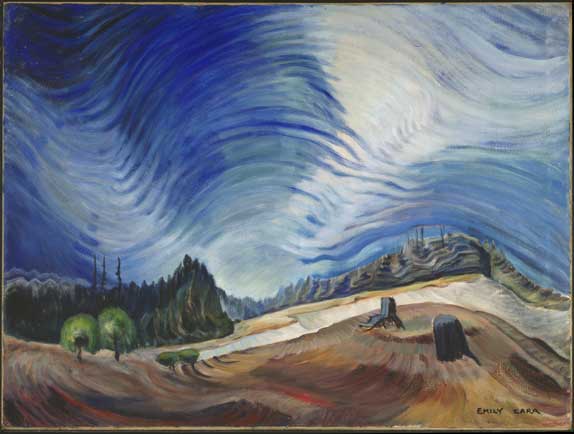
Above the Gravel Pit
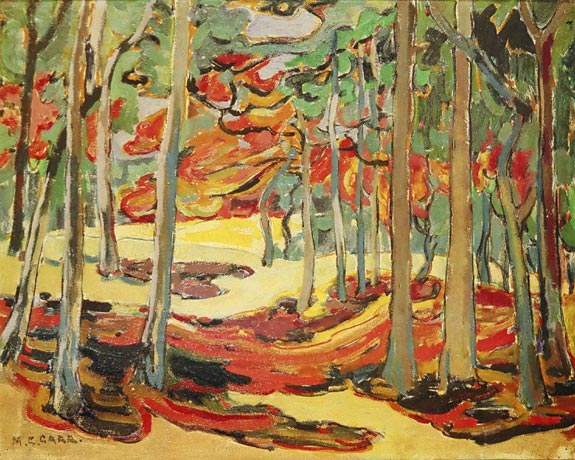
Autumn Woods
Carr’s parents died when she was only a teenager, which prompted her to move to San Francisco. Carr realized her interest in art and enrolled in the California School of Design. When Carr finished school she moved back to Victoria, where she transformed a family barn into a painting studio. Carr worked on her own paintings and offered art classes to children. After a few years of working in her self-made studio, Carr decided to continue her education and moved to London to study at the Westminster School of Art. Carr was not fond of the climate in London and relocated numerous times to schools in Cornwall, Bushey and Hertfordshire England.
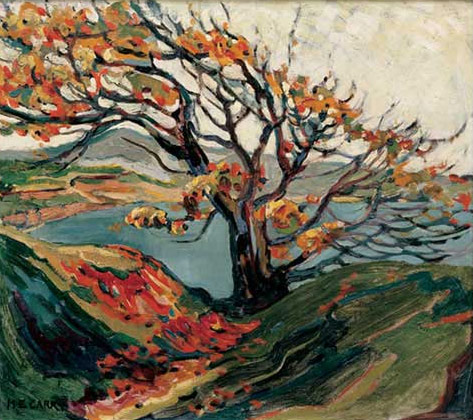
Tree in Autumn
In 1910 Carr spent a year studying at the Academie Colarossi in Paris before settling in her native British Columbia. Carr was fascinated by the First Nations cultures and made several visits to the Nuu-chah-nulth, Kwakwaka’wakw, Haida, Tsimshian and Tlingit communities. Carr picked up the practice of painting totem poles in order to learn more about them. Carr continued to make paintings influenced by the post-impresionist and fauvist styles she had learned about in France.

Totem Walk at Sitka
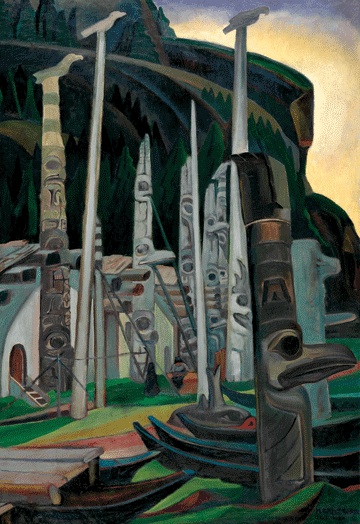
Heina

Indian Church, 1929
In 1913 Carr returned to Victoria for financial reasons. Carr felt extremely isolated and unable to find artistic support. Carr stopped painting for several years and worked as a potter and dog breeder.
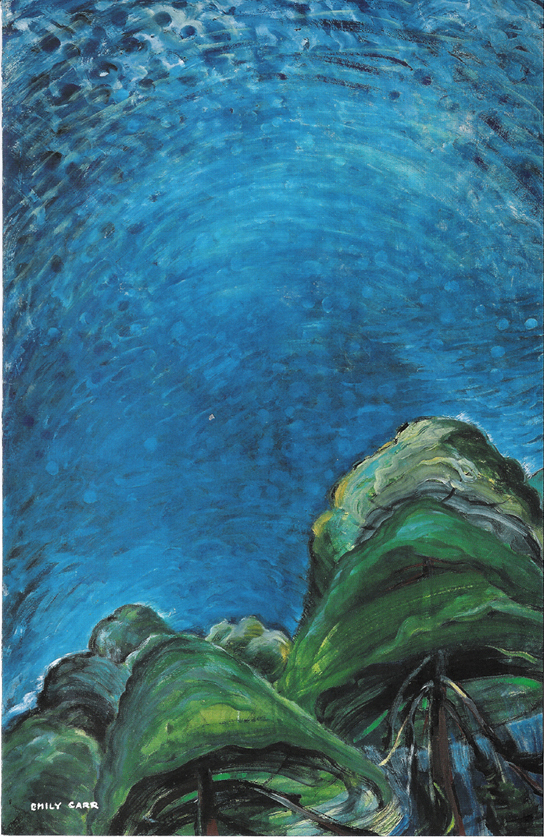
Above the Trees
In 1920 Carr was invited to participate in a show at the National Gallery of Canada in Ontario titled “Canadian West Coast Art, Native and Modern”. At the exhibition Carr met the “Group of Seven”, who were focused on creating distinctly Canadian art. Carr was accepted by the group and began showing with them. Carr’s enthusiasm in painting was restored and she made some of her best-known pieces. The Group of Seven sometimes referred to Carr as “The Mother of Modern Arts”.

Among the Firs, 1931
Carr had many exhibitions during the 1930s in prestigious locations such as the Art Gallery of Ontario and the Vancouver Art Gallery. Carr has become an icon in Canada, and an inspiration to women artists around the world. Do you think you own a painting by Emily Carr? Contact us. We are the Emily Carr experts.
